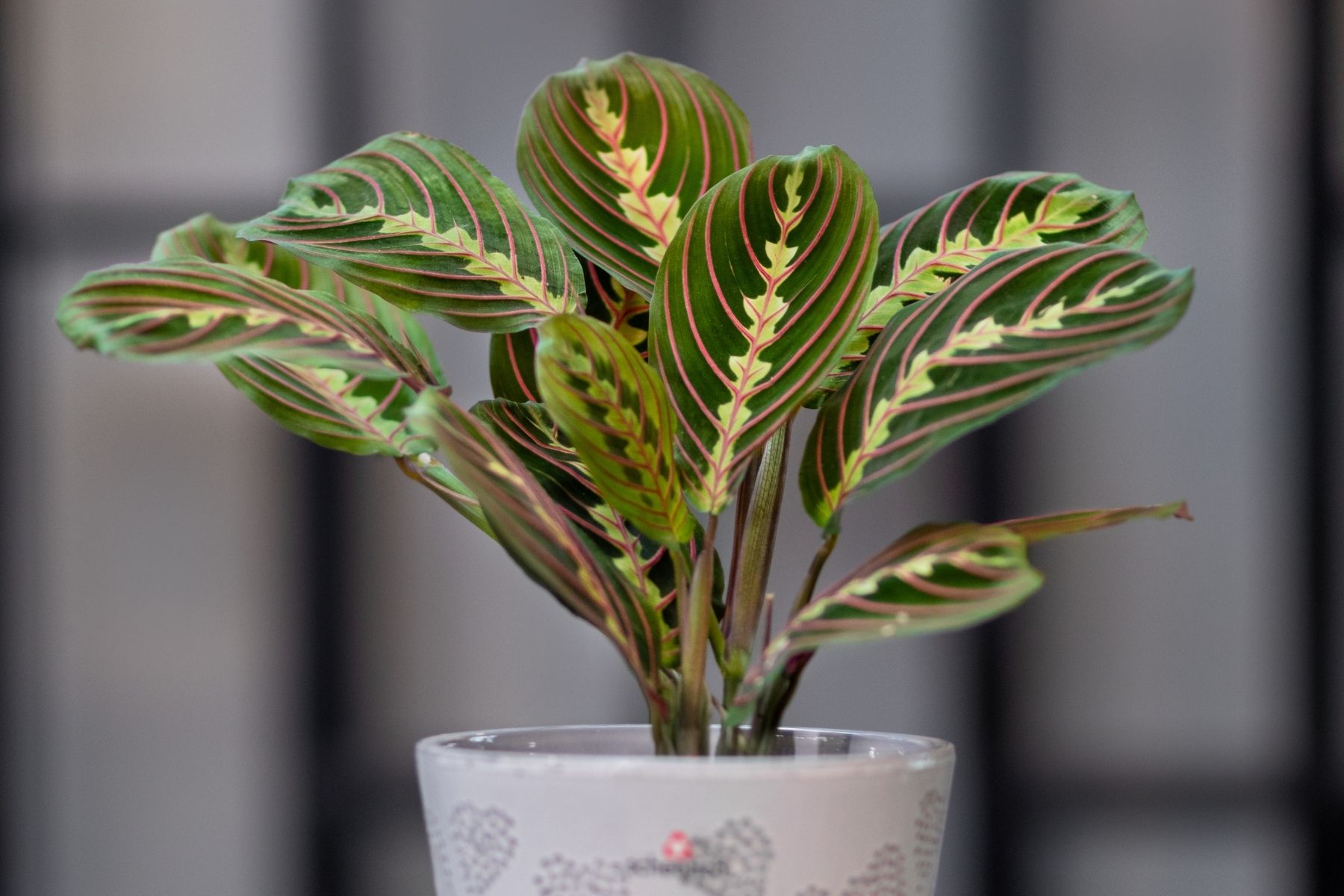Last Updated on June 7, 2022 by Real Men Sow
Maranta is a stunning house plant that is known for its striking and bold foliage. The intricately patterned oval leaves with variegated patterns look like an artist’s brush strokes. The leaves’ undersides are often dark-red.
How To Grow Maranta
Marantas require special care to thrive. They require a warm place and indirect sunlight. The soil should be kept moist throughout the year, with some humidity provided by daily misting or standing on a tray of moist stones. You should water them with either filtered or distilled water or rainwater.
Where To Grow Maranta
Marantas thrive in indirect, bright light, but can tolerate some shade. However, you should avoid direct sunlight as it can scorch the leaves. Keep the room at 15°C and keep it from rooms with fluctuating temperatures.
Does Maranta Close At Night?
They open their leaves at dawn and close them at night. This is called nyctinasty, and it is amazing to watch. Marantas are closely related to calatheas but calatheas’ leaves don’t close at night. They are more spread out than calatheas, so they can be used as shelf or hanging plants. Marantas are native to the rainforest floor of tropical rainforests. This gives them plenty of clues about their care: they can tolerate low light but require plenty of humidity to thrive.
What Compost to Use For Maranta Plant
Use soil-based compost to plant. If rootbound, repot in spring into a slightly larger container. Marantas have shallow roots, so make sure you choose a wider pot.
Caring For Maranta
From spring through autumn, keep the soil moist but not soaking wet. A little bit is better than none. Marantas are sensitive and will only drink tepid distilled, filtered or rainwater. Be sure to drain any extra water.
Watering
In winter, water less but keep the soil moist because marantas thrive in humid environments. To keep them happy, mist their leaves with warm water daily or place them on a tray of pebbles that has been topped with water. Every couple of months, feed the marantas with a balanced fertilizer. To remove any dust, wipe the leaves often.
How To Propagate Maranta
Dividing a maranta is the best way to reproduce it. You can repot the maranta in spring by gently pulling apart the root ball using your fingers. A clump should fall away naturally. Make sure that each clump contains a portion of the root system. Place both plants in fresh compost. Use pots that are slightly larger than the root balls. You can remove clumps with a sharp knife.
Stem cuttings are also an option for marantas. Use a knife or secateurs to remove the stem from your main plant. Make sure it has a node. Let the wound dry for several hours. Next, place the cut in a small container of compost or water. Wait for roots to form, which may take up to a few weeks.
Problems When Growing Maranta
Curling Leaves (inwards)
It’s sign of underwatering. Therefore, once watered, it will soon stop curling but after watering, ensure that excess water is drained away.
Yellowing or wilting leaves
Overwatering, Soggy compost can cause marantas to die. You may notice that the roots rot. Let the compost dry before watering again. Then let any excess water run off.
Brown patches
Sunburn, please proceed to take your plant out of direct sun.
Faded leaves
This likely means that they have been exposed to too much sunlight, please proceed to moving to a more shaded spot.
Brown spots on the leaves
Leaf Spots, this is why you should avoid splashing the leaves with water, and don’t use tap water.
Brown edges on the leaves or brown tips
Dry Air, misting the plants or standing on a tray with damp pebbles. It is possible that you have overfed or given your plant hard water.
Red spider mite
The stems and leaves of the plant will become covered with fine webbing, and the upper surface of each leaf will become mottled. You will find mites on the undersides if you use a magnifying lens. Increase the humidity by improving air circulation. Sprays that contain fatty acids and plant oils can be used in place of this.
Varieties To Grow
- Maranta leuconeura var. erythroneura ( Maranta ‘Fascinator’) – Also known as the herringbone or maranta ‘Fascinator plant’, it has yellow-green splotches and bright red veins along its midrib.
- Maranta leuconeura var. Kerchoveana (Rabbit’s Foot) – Its leaves are bright green with darker patches on either side, and it’s shape is similiar to a rabbit’s foot. The underside of the leaf is silvery green.

